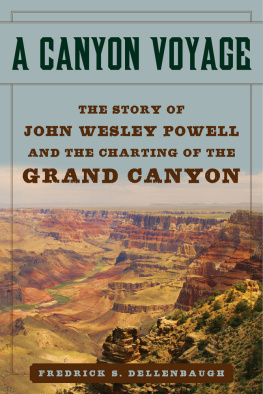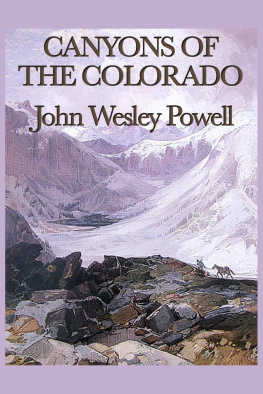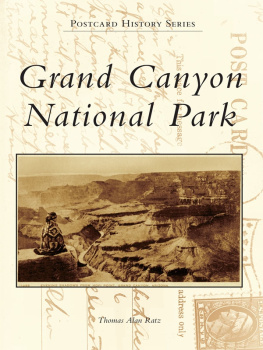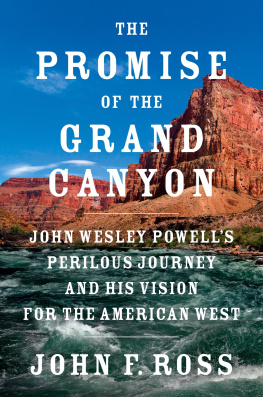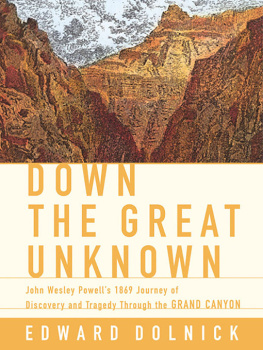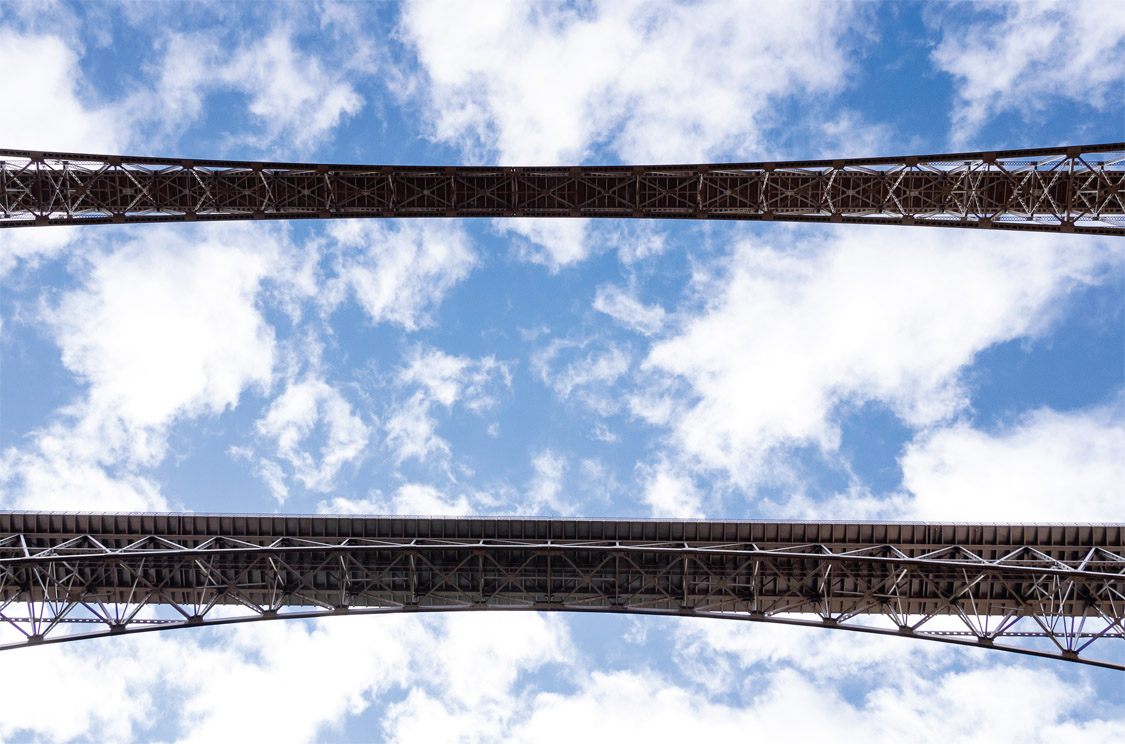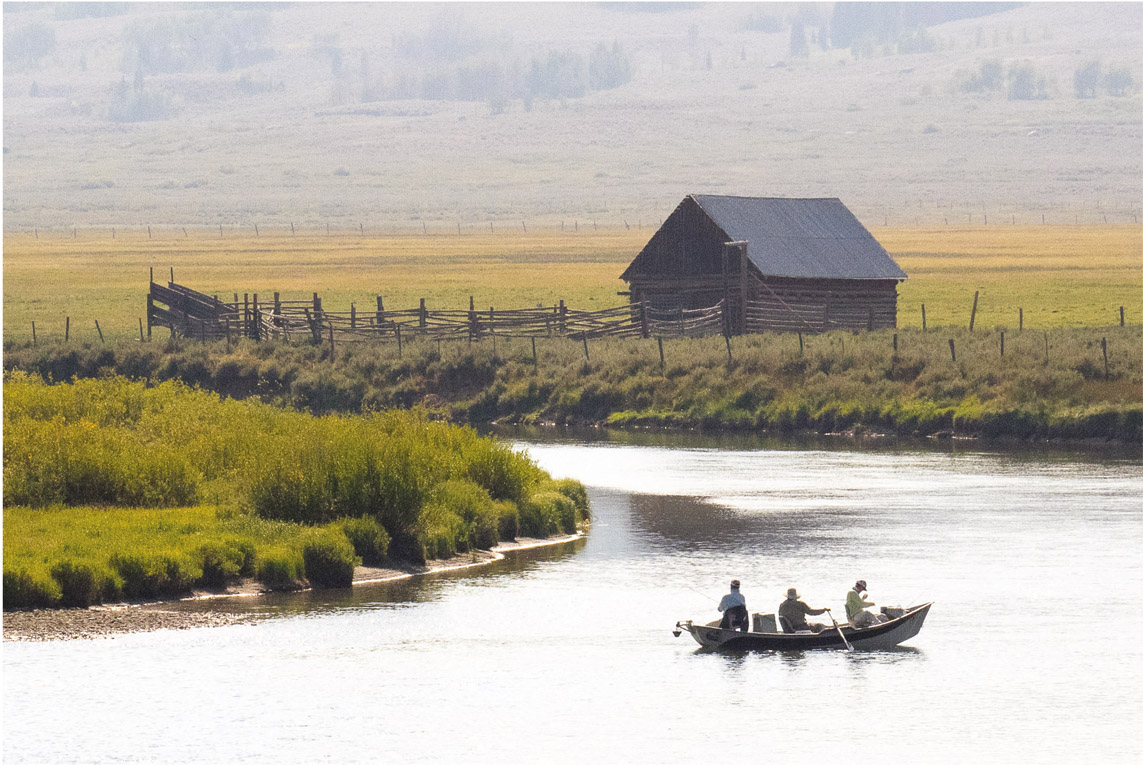Acknowledgments
To begin, I feel compelled to honor the essential contributions of liquid water. Water, youve been there the entire wayall 5 years and thousands of river miles I spent on the project that became this book and much, much longer. Like billions of years longer. Just doing what you do, in a most fantastic desert, so we can do what we do with boats. Youre the best, water.
Next, a major thanks to all the boaters who participated in our first fresh eyes descents, including Paul Polewaczyk, Curtis Ahlers, Rick Neal, Nicky Neal, Amanda Lappe, Brad Moschetti, Courtney Hart, Dan Macheca, Mitch Wieldt, Sam Bania, Kelly Kastens, Will Scherff, Sam Scherff, Di McHenry, Chuck McHenry, Nate Howard, and my wife, Ina Seethaler. Plus, a huge thanks to all the boaters I met along the way or did subsequent trips with. Many of you offered gracious help and welcome information. I am lucky to have become friends with so many cool people.
Id like to offer a big thanks to Zak Podmore for writing the foreword and reviewing the manuscriptalong with Dave Shively and Jeff Moag, all three of Canoe & Kayak magazinefor supporting my work these many years. Thank you, David Legere, Melissa Baker, and the team at Falcon for editing and producing this book and the last one. And thank you to the many fantastic contributors and companies who provided vital photos, interviews, information, contacts, books, journals, materials, logistics, shuttles, equipment, and one very welcome high-water rescue: Justin Baile, Jonathan Bowler, Sinjin Eberle, Max Gans and the 2017 CAT crew at Sherri Griffith Expeditions, Lars Haarr and OARS, Peter Holcombe, Nate Howard, James Kaiser, Mick Krussow, Brendan Leonard, Amy Martin, Tom Minckley, Hilary Oliver, Kirk Rasmussen and NOLS, Will Stauffer-Norris, Whit Richardson, Doc Searls, and Forest Woodward.
Thank you to the outfitters who helped with logisticsDutch John Resort, River Runners Transport, Canyon REO, and Desert River Outfitters. Thank you to the US Geologic Survey and Grand Canyon National Park for their Powell Expedition photo collections. Thank you to historians Tim Glenn at the JW Powell River History Museum in Green River, Mark Law at the Powell Museum in Page, and Dave Mead at Sweetwater County Museum; and thanks to Michael Ghiglieri for expertly compiling the original journal accounts in First Through Grand Canyon. Plus, other great guidebook authors whose work Ive used for years, including the Belknaps and Tom Martin. Anyone remember Western Whitewater?!shout-out to the original classic.
Seeing the underside of Navajo Bridge, just downstream from Lees Ferry, means one thing: Grand Canyon trip!
Also, a big belated thank-youIm always running about 150 years behind on stuffto the original ten expedition members, without whom people might say to me, So you wrote a fictional guidebook? Thats weird. Anyway, I appreciate the memories, John Wesley Powell, George Bradley, Jack Sumner, Oramel Howland, Andy Hall, Billy Hawkins, Bill Dunn, Walter Powell, Seneca Howland, and Frank Goodman. Plus, nice work, members of the second expedition, especially Frederick Dellenbaugh, Almon Harris Thompson, E. O. Beaman, and J. K. Hillers.
And two final mentions to a pair of natural phenomena. First, the sun. Yeah, the one up in the sky. You can be pretty harsh at times, but youre absolutely amazing when I stop to think about it. The Mayans definitely had some stuff figured out. What youve done out in the canyons of the Southwest is beyond words, beyond photos, beyond imagination. But, of course, none of it could have happened without geology. Yes, technically, water did most of the recent work, but lets not split atoms here. Geology, without you, wed have no rapids, no downstream currents, no excuses to dress up like postapocalyptic superheroes with terrible color coordination who hoot and holler between splashes. Geology, without you, people would think paddlers are just strange cult members who stare at cliffs from boatsokay, thats fair, actually. Geology, without you, we river runners would probably have more stable jobs. Take a bow, geology. But please be careful. Youre looking kind of friable these days. And with that river-runner knee slap, lets get on with it...
UPPER GREEN RIVER AND LAKES
UPSTREAM FROM THE ACTUAL START OF THE POWELL ROUTE, there is over 200 miles of valley river and mountain lakes often forgotten by paddlers infatuated with the famous desert sections below. But in southwestern Wyoming, there is much of relevance to the Powell route and plenty of highlights worth visiting for their own merits.
The Green River begins its 730-mile coursetoward a confluence with the Colorado River in Canyonlands National Parkas an alpine stream emerging from glaciers just west of the continental divide in the Wind River Range. While the uppermost headwaters, within Teton-Bridger National Forest, are best explored on foot, plenty of scenic paddling can be found at Green River Lakes and nearby stretches of the river.
While exploring lower Green River Lake, I hung out with two families of lifelong boaters, including a pair of exceptionally bright teenage daughters and a baby boy given the middle name Powell, for family hero John Wesley.
The October basecamp used by Zak and Will to explore the headwaters of the Green River in the Wind River Range. Will Stauffer-Norris
The upper Green River has a curious trajectory, first aiming northwest as it emerges from the glacial-carved Winds, before making a sharp, sweeping bend south, as if saying, Screw this, Im going somewhere warmer. Downstream from the lakes, the Green flows through peaceful meadows and tumbles down occasional class II rapids, bordering on class III at higher spring flows, before slackening into braids and meandering through Green River Valley.
The Floaters Guide to Wyoming by Dan Lewis covers the 200 miles of the upper Green River. Published in 1991 and now out of print, the guide is available in its entirety on the authors website: wyomingnaturalist.com.
Though this chapter focuses on just two sections of the upper Greenthe lakes and Seedskadee Wildlife Refugeplenty more is worth exploring, and paddlers could spend more than a week in this area. In addition to paddling, the hiking near the lakes is some of the most dramatic found outside of national parks. And two valley museums (see page xlii) give insight into Western life in the periods before and after the Powell expeditions.
Quiet stretches of the upper Green River offer ample float and fish opportunities, whether by drift boat, kayak, paddleboard...
PADDLING: GREEN RIVER LAKES
If you paddle only one of the five lakes and reservoirs featured in this guidefor the sake of dramatic scenery and remarkable variety compared to canyon countryconsider lower Green River Lake. If you paddle only two lakes, then why not send a subtle dig to the Bureau of Reclamation by paddling up through a pristine delta and camping beside the milky turquoise waters of upper Green River Lake? From there, motivated paddlers can navigate a few more miles of upper river toward Squaretop Mountain before beaching boats and exploring on foot. A hiking and horse trail follows the river to its headwaters at the Great Divide and continues beyond, offering excellent but challenging backpacking options. The fishing on the lakes and surrounding river is considered top-notch by visiting anglers. And downstream from the lakes, there are plenty of paddling opportunities, which can be scouted and accessed from the gravel road.


